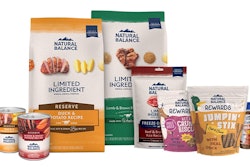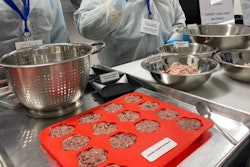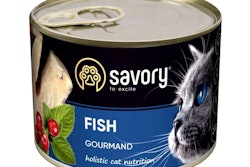
“CPG inflation has peaked,” read a (rather bold) headline from NielsenIQ in its recent, weekly “IQ Brief” newsletter. The related article referred to the U.S. Consumer Price Index (CPI) figure of 7.7% for October 2022, a welcome decrease from 8.2% in September. Yet: “It is definitely a positive sign that the rate of inflation is starting to come down as we move into the holiday shopping season, but let’s not lose track of the fact that inflation is still painfully high,” the article read.
That’s especially true for some individual consumer packaged goods (CPG) categories, including for human food, highlighted in the article: In October, dairy was at 21% inflation year over year (YOY), dry grocery at 17% and frozen foods at 16%.
Overall, human food (food at home) inflation in the U.S. settled at 12.4%, but that’s not as bad as pet food, which reached a new high of 15% YOY inflation in October, according to data from the Bureau of Labor Statistics (BLS), compiled and analyzed by John Gibbons on his PetBusinessProfessor.com blog. That figure represented a 1% rise from September’s 14%, similar to the increase in September (up from August’s 13.1%). The good news, I suppose—yes, this is a bit of a reach—is that pet food inflation has not grown as rapidly the past few months as earlier in 2022.
Light at the end of the tunnel?
An actual bright spot in the October numbers comes from the producer price index (PPI), or how much pet food manufacturers are paying to produce pet foods and treats. According to BLS data provided by Gibbons, the U.S. pet food PPI for October 2022 was 12.7% YOY, up only 0.5% from September. And, comparing the latest figure to pre-pandemic times, December 2019, the PPI for dog and cat food stands at 19.2%—pretty high, but nearly the same as in August, at 19.3%.
The only subcategory seeing an increase in its PPI, and it was a very small increase from September, was dry dog food. In other words, producer costs appear to be stabilizing. And since those costs eventually show up in retail prices (the CPI), perhaps that portends that pet food prices will stabilize soon, too? We can only hope.
Peaking here, surging there
Around the world, human food and other CPG inflation appears to have also peaked in China, according to Marc Cevera, writing for FoodIngredientsFirst.com, yet is still rising in the European Union (EU) and U.K. In the EU, food inflation reached 13.1% YOY in October, and 16.2% in the U.K. (Note that these may not be apples-to-apples comparison with the U.S. food inflation data, as Cevera’s article cited figures also encompassing alcohol and tobacco sales.)
For the U.S., Cevera provided a hopeful outlook: “According to the U.S. Department of Agriculture, food inflation is going to stabilize between 9.5% to 10.5% at the year’s end,” he wrote. “Most commodities are expected to lower in prices by end 2022, when compared on a year-to-year basis, including dairy products, fats and oils, fruit and vegetables, sugar and sweets, cereals and bakery and non-alcoholic beverages.” Meat prices will be the “outlier,” projected to continue to increase, but growing much more slowly in 2023.
Perhaps NielsenIQ’s headline is accurate, and inflation is starting to peak—possibly for pet food, too? To date, the pattern has been for pet food inflation to closely track human food inflation in most countries and regions, lagging a little behind except for in the U.S. Thus, if human food has indeed peaked in some markets, maybe pet food will follow; and even in the U.S., stabilizing producer prices may portend the same.


















